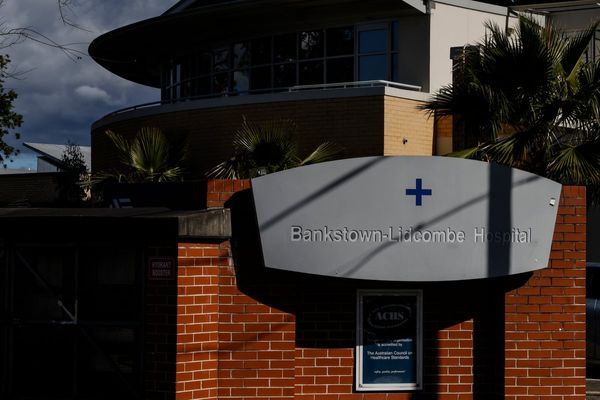DALLAS — At first, the conversations seemed ridiculous. “Business is fantastic,” says Bob Sambol, the namesake of Bob’s Steak & Chop House on Lemmon Avenue in Dallas.
“We’re all having record sales,” he adds.
He’s speaking of a group of thriving steakhouses that include Nick & Sam’s and Al Biernat’s. Sambol says he experienced higher-than-ever sales in 2021, making it the restaurant’s highest-grossing year in nearly three decades.
2022 might be just as strong, says Dallas restaurateur Al Biernat, who has been in the business for 50 years.
But how? Nearly 20% of Dallas-Fort Worth restaurants closed during the first year of the coronavirus pandemic, between March 2020 and March 2021, and thousands more have shuttered since or are struggling today. Fort Worth restaurateur Tim Love told The Dallas Morning News at the beginning of the crisis that restaurants could survive with no cash for a shocking three days, saying the pandemic had the opportunity to “destroy everything I’ve built.”
Slow sales, supply-chain issues and the burden of pivoting to to-go did destroy many North Texas eateries. (But Love, Fort Worth’s most prolific restaurateur, did not experience the widespread restaurant closures he projected.)
At first, thriving restaurateurs didn’t want to talk publicly about their sales. Maybe they didn’t want to jinx it. Some had survivors’ guilt.
By the end of 2021, an anthem was brewing among a fraternity of restaurateurs, often in high-end North Texas neighborhoods serving wealthy customers: We’ve been at war. But we are winning.
‘2020 was a disaster’
Dallas-Fort Worth restaurateurs’ successes in 2021 can’t be considered without a look first at 2020.
“2020 was a disaster,” Sambol says. “We lost money for the year, we were down significantly in sales. I couldn’t sleep at night.”
The year was devastating — both for sales and for profits — in nearly every sector of the restaurant industry, not just fine dining, says Emily Williams Knight, president of the Texas Restaurant Association. An exception was fast food and delivery services, many of which had already streamlined strong business models before the pandemic and were able to thrive, almost effortlessly, when the coronavirus forced customers to stay home.
“If you had a drive-through or sold portable food, you were killing it,” Knight says. “But that was not a lot of our restaurants.”
Pizza, in particular, thrived.
For Zalat, which is Dallas-Fort Worth’s fastest-growing independent pizza brand, it was already poised to perform well because it was growing rapidly. Founder Khanh Nguyen and his team opened seven stores in 2021 and it was the highest-grossing year in the company’s seven-year history.
Sammy Mandell, owner of Greenville Avenue Pizza Company, says the beginning of 2021 — a time when restaurants generally see depressed numbers due to after-holiday health consciousness and cold weather — was “insane,” sales-wise. Customers wanted to eat in restaurants and were excited to order food from their favorite places again as the world headed toward the first anniversary of COVID-19 in the U.S., he says.
But Mandell says the hard work came at a cost. The pandemic took a mental-health toll on restaurant workers well into 2021 and 2022.
GAPCo started overstaffing its calendar to leave a cushion for workers who got sick, needed a mental health break, or quit their jobs. Mandell says he spent $4,000 per month at the beginning of 2021 to recruit new workers. The back half of the year was the most difficult of his 14 years in the pizza business, because restaurant workers had shouldered more than a year and a half of uncertainty and stress.
Do higher sales mean higher profits?
Restaurant owners like Sambol, Biernat, Nguyen and Mandell saw great sales in 2021, but their expenses were also much higher — which eats into profit.
2021 was not GAPCo’s best year, in terms of profit, its owner says.
Steakhouses like Sambol’s and Biernat’s didn’t experience the same plight.
“High-end restaurants are so insulated from many of the problems that our fellow restaurateurs experience,” Sambol says. Biernat, who operates two steakhouses — on Oak Lawn Avenue and Spring Valley Road — says his profits were up, too.
“Volume covers everything,” he says.
Inflation rates climbed drastically in 2021, from 1.4% in January 2021 to 7% in December 2021, according to Statista. (It was up to to 9.1% by June 2022.) Nearly every restaurant cost has increased. For example, Sambol raised wages so that cooks’ rates averaged about $25 an hour. He raised prices on steaks. Laundry companies charged more to clean linens. Forks were on back order.
Some of those costs can be passed on to the consumer, and in some cases, restaurants saw depressed sales from cash-strapped customers trying to save.
But steakhouse customers didn’t seem to carry the same burden, Sambol and Biernat say.
“Our customer isn’t price-conscious, they’re quality conscious,” Sambol says. “So if you’re going to raise your price, you’d better raise everything else along with it: the quality of service, the cleanliness, the hospitality aspect.
“Everything has to get better, so your customer still thinks it’s worth it.” And it’s the fine-dining restaurateur’s job to erase all those worries once a customer sits down.
Sambol has had a strong enough 2021 that he’ll open a new Bob’s Steak and Chop House in McKinney in 2023.
Of note, Sambol is among the many restaurant owners in Dallas-Fort Worth who accepted what he calls “crucial” PPP funds to bolster their businesses. In 2020 and 2021, the Small Business Administration had allocated nearly $800 billion in PPP nationwide. Food-services businesses received the biggest PPP funding among all industries in 2021, at $41.5 billion.
While that money gave a boost to struggling restaurant owners like Sambol in 2020, experts interviewed by The News were still surprised to hear their success stories one year later.
So how’d they do it?
It’s easy to say that customers flocked back to restaurants in 2021 because they wanted to get the heck out of the house. Pent-up demand, a phrase we’ve read so many times since 2020, was real. But there’s much more to it.
Customer loyalty goes a long way.
Chef and server talent is important.
Privilege is a factor — both for the established restaurants earning big bucks and for the well-to-do customers they serve.
Size and scale is also key: Dan Bejmuk, a national restaurant consultant and a member of the National Restaurant Association’s marketing executive steering committee, says restaurants that are medium- to large-sized thrived because they had the backing to make it through an uncertain year. They also had the manpower to look to the future.
“When you’re trying to operate and just stay afloat, looking forward for growth potential means pulling away from operating,” Bejmuk says.
“Everyone’s trying. But when you have more resources, you can certainly be much better at it.”
Geography matters, says Robin Gagnon, CEO and co-founder of We Sell Restaurants. She works with restaurants in 45 states and says, without a doubt: National restaurateurs are looking to grow in Texas and Florida more than anywhere else.
And how about that other lucky charm? Opportunity. A select few restaurant owners were in the right place at the right time, then had the resources to pounce.
Scott Christian, owner of Hochatown Saloon near Broken Bow Lake, says his hometown watering hole was seeing $2 million a year in sales, pre-COVID. Now that restless Dallasites are making the drive to this growing Oklahoma town, Hochatown Saloon is now about to double its yearly sales, to nearly $4 million.
“I think people quit going to Disney World and to Mexico and started coming here,” Christian says. Perhaps they rented a cabin, which felt safe during the pandemic. Maybe, they’ll return next year to spend more money. If that happens, Christian has just created a new destination during one of the most devastating financial crises of our lifetime.
Consultant Izzy Kharasch, president of Hospitality Works, shepherded the saloon’s ups and downs. “The ones that are the most successful are not looking to overcome COVID,” Kharasch says.
They’re thriving through it.
Biernat is already optimistic about sales numbers for 2022. He hints at what’s to come: “This wasn’t just a one-year thing.”







